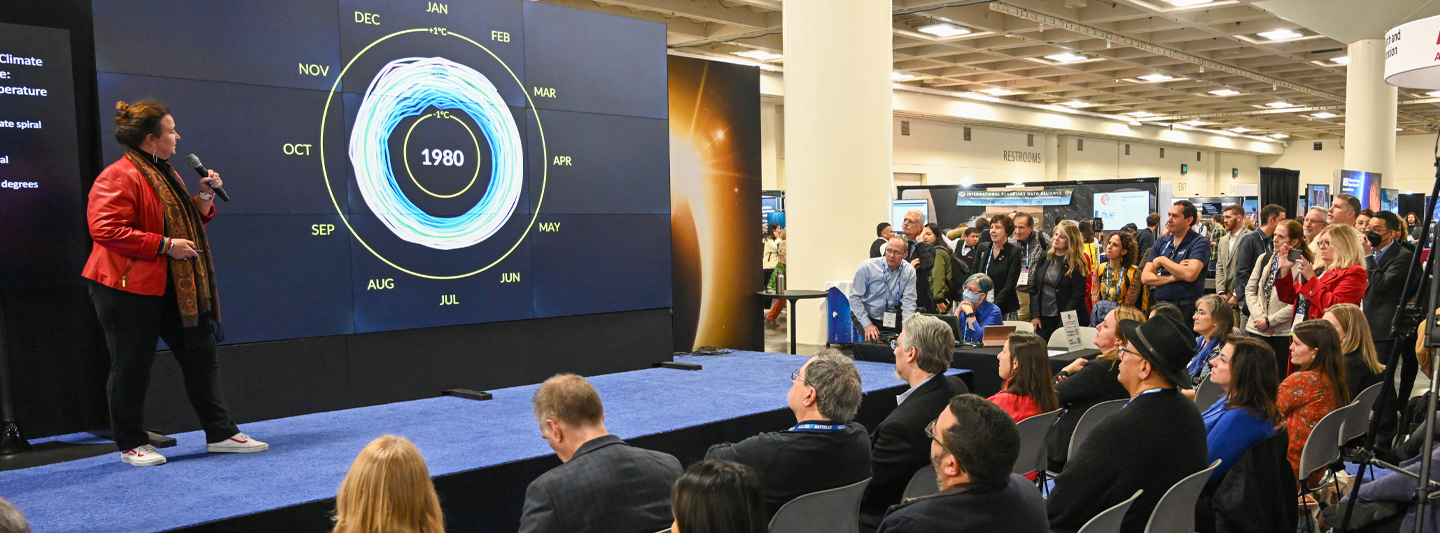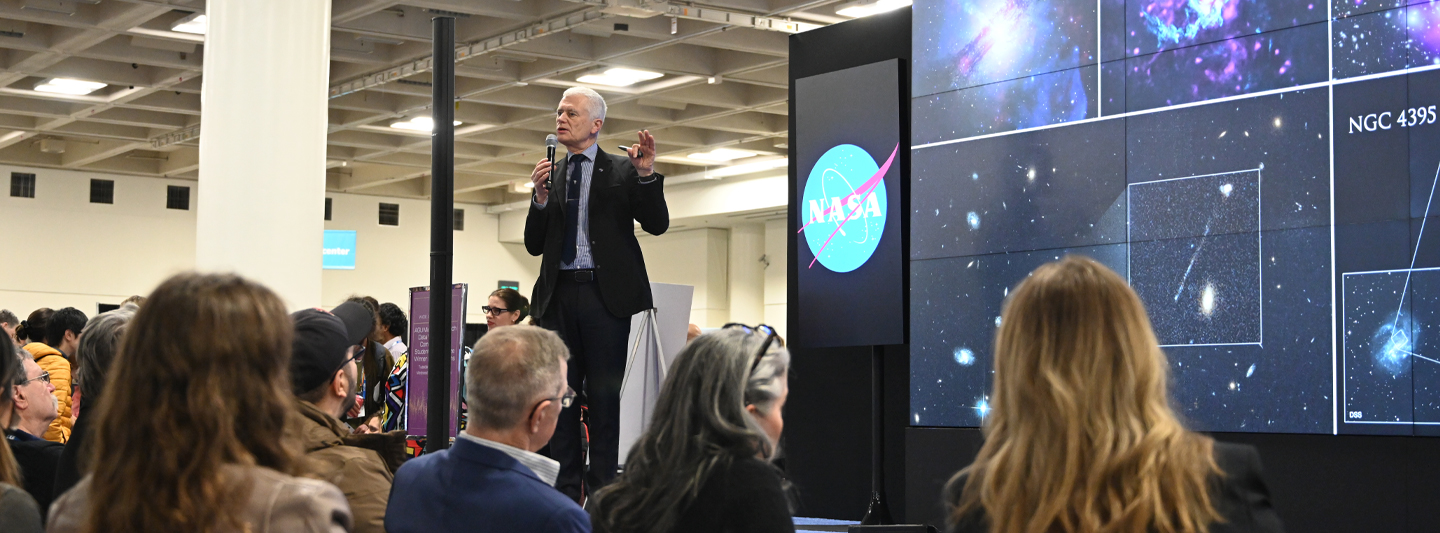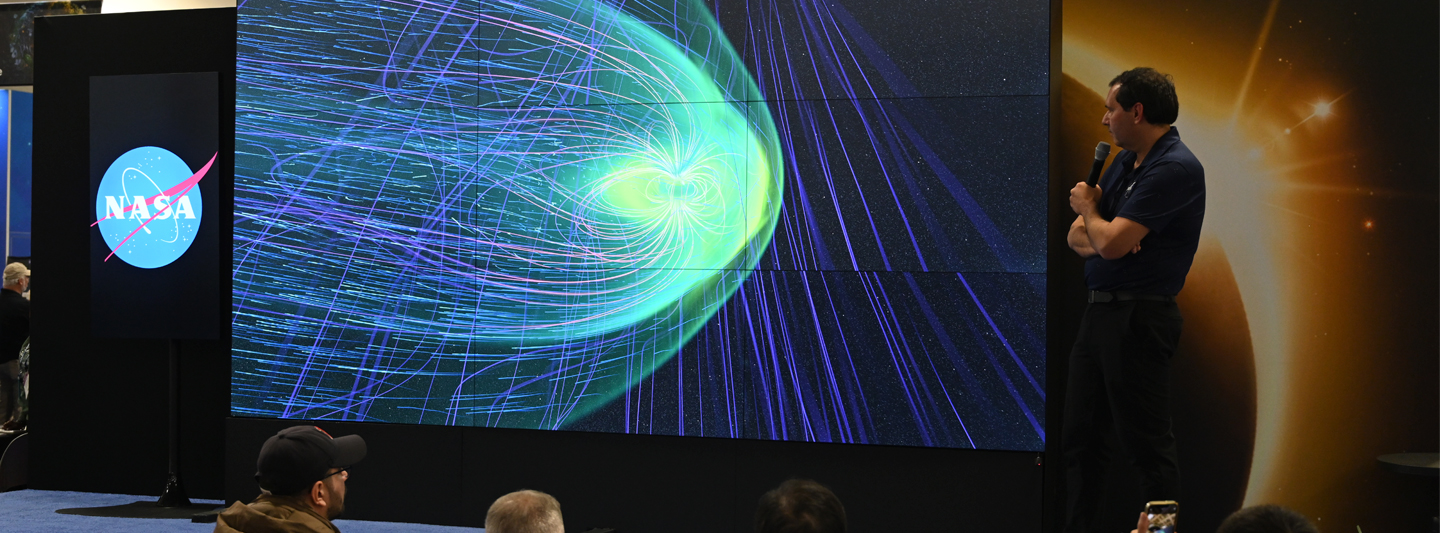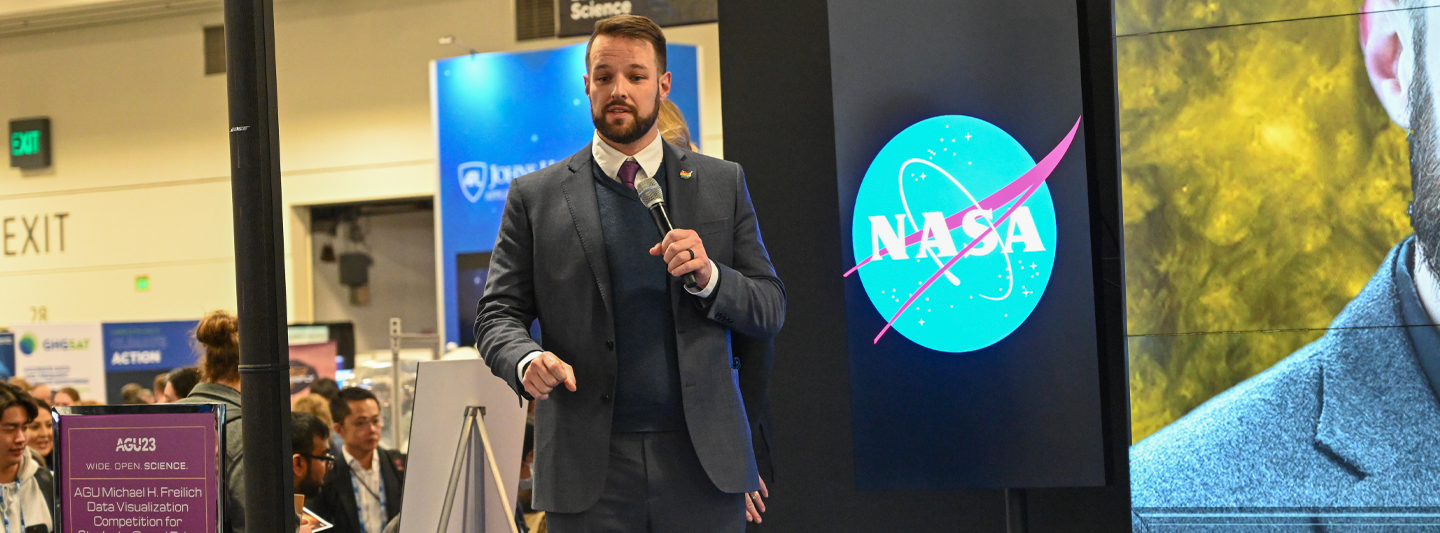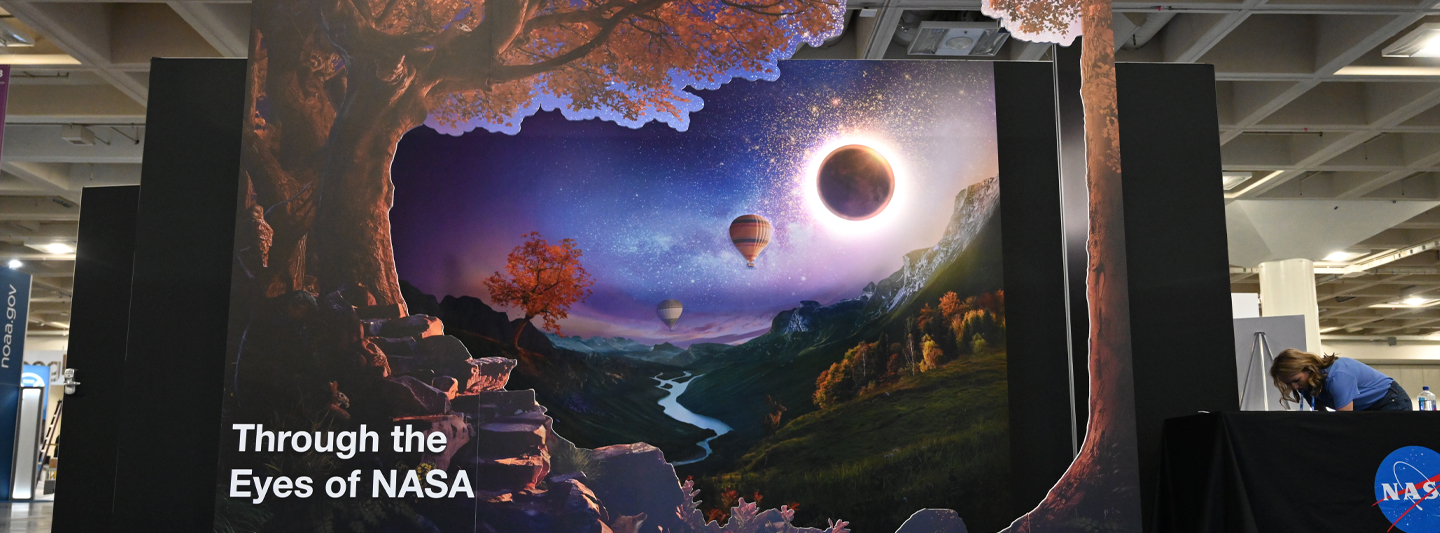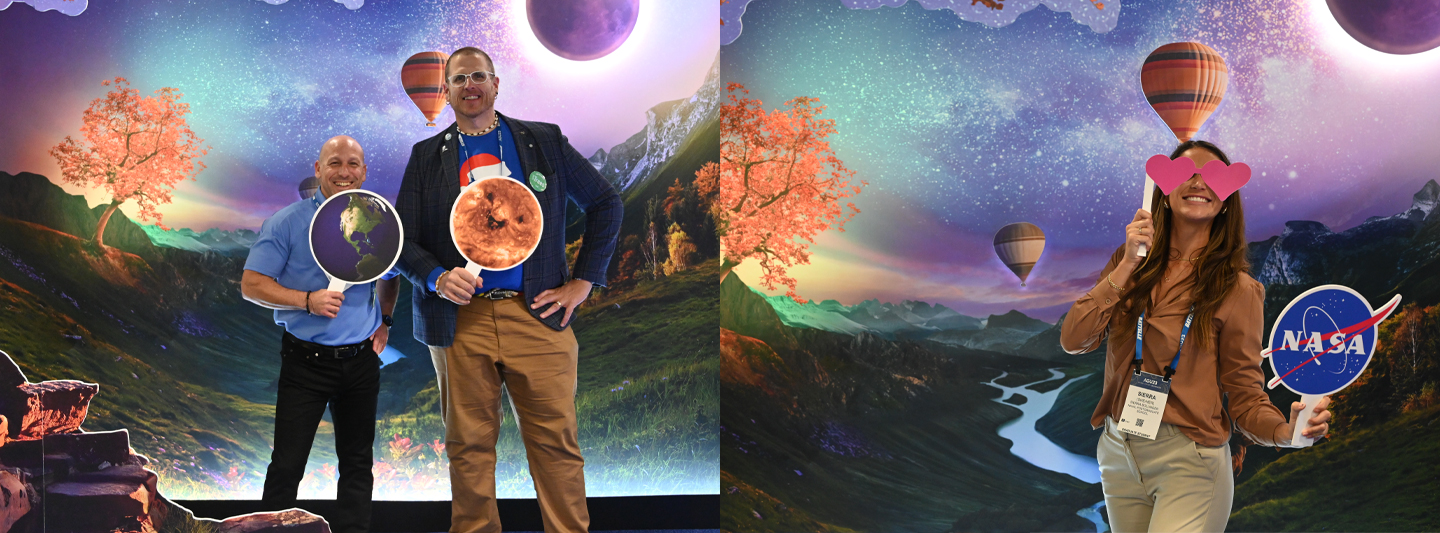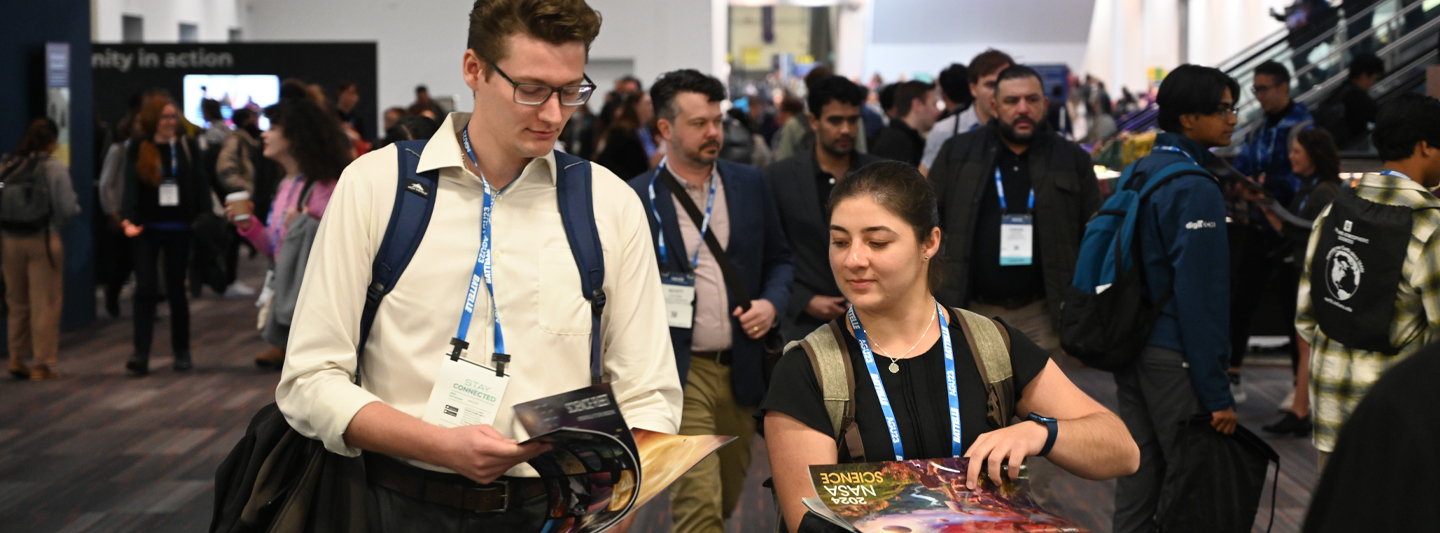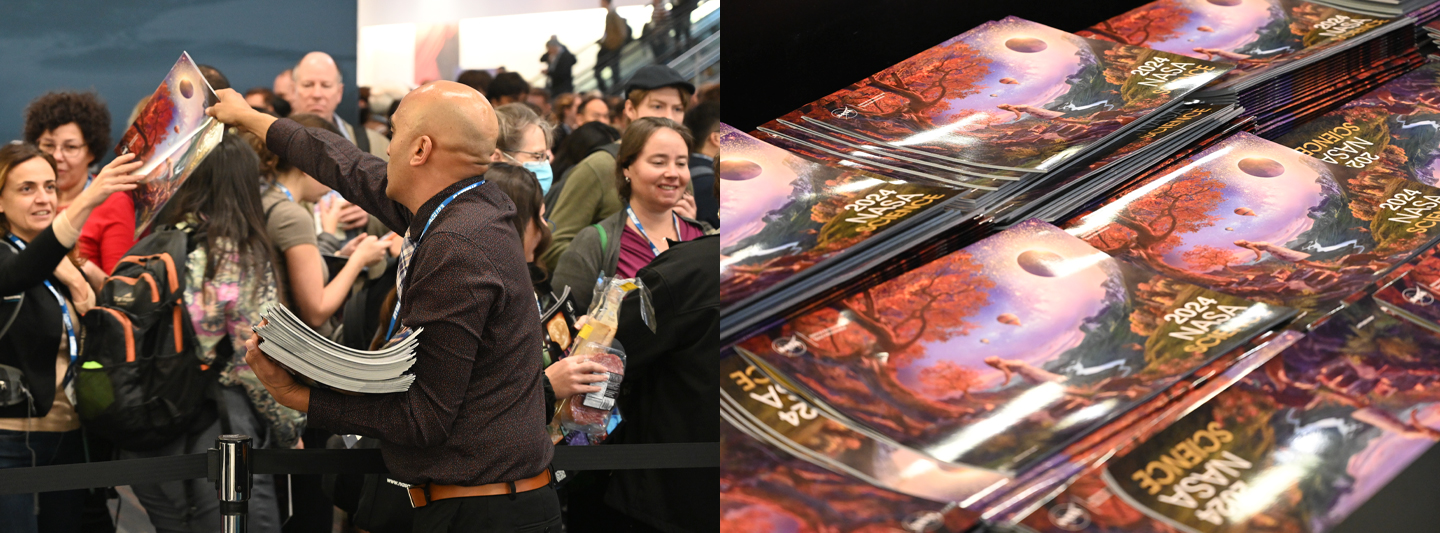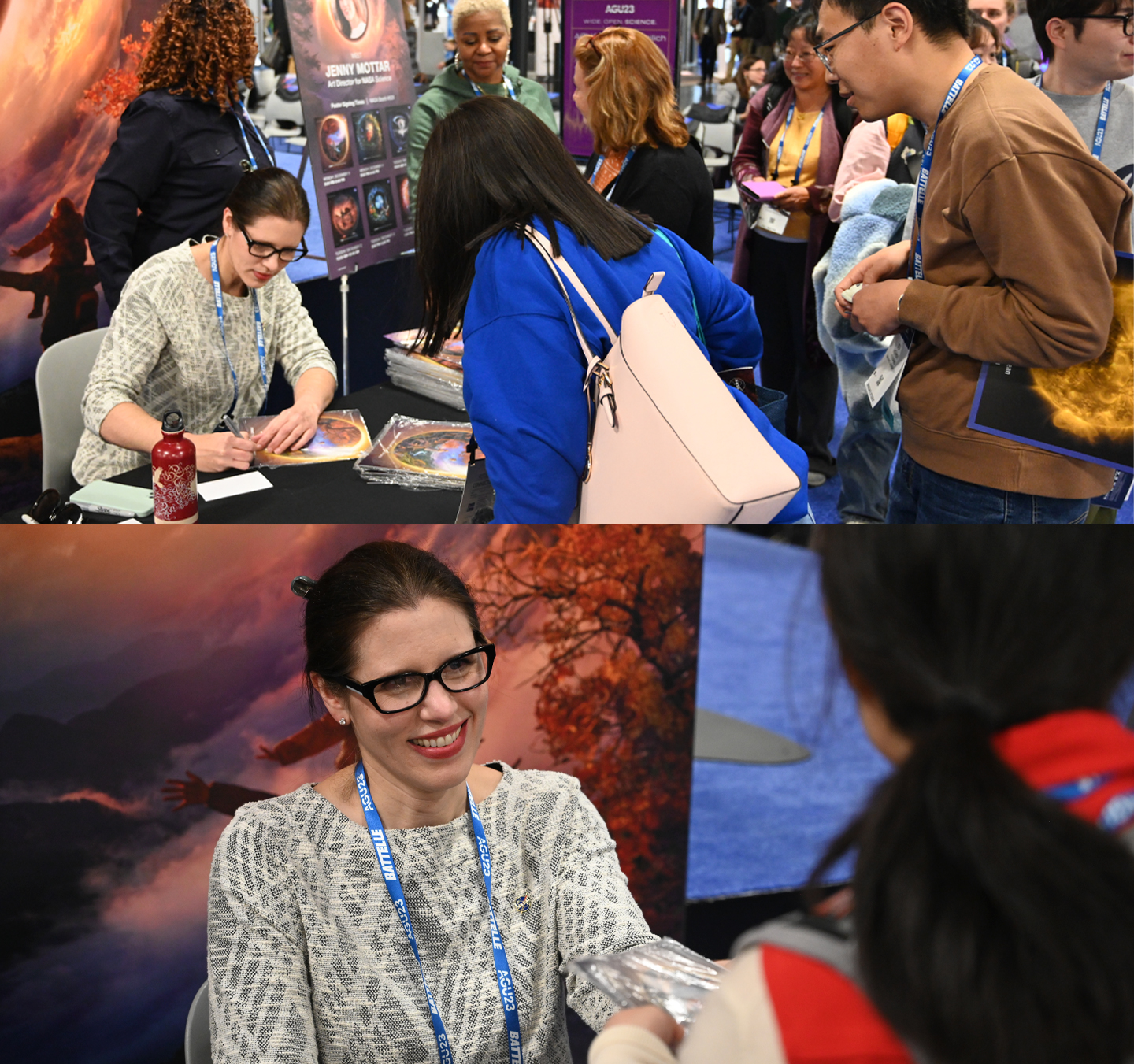Introduction
As one navigates the global constellation of scientific conferences offered each year, the annual Fall Meeting of the American Geophysical Union (AGU) is the guiding star. The meeting attracts participants from an ensemble of academic disciplines and a sizeable number from private industry. This diverse crowd converges each year to share ideas, research, and technological advancements in geophysics and its commensurate fields of Earth and space sciences.
The 103rd installment of the meeting in 2023 proved to be no exception. Attendance soared to pre-pandemic levels, as 24,843 individuals from more than 100 countries convened December 11–15, 2023, at the Moscone Convention Center in San Francisco, CA. This past year’s event (AGU23) continued the hybrid format that began out of necessity during the pandemic and has now become the “new normal” for many meetings. A selection of the meeting’s plenary sessions, posters, and exhibitor booths were available online, providing those who couldn’t attend the in-person conference with an option for virtual, on-demand participation.
NASA’s Science Support Office (SSO) continued its longstanding role of leading the planning and logistics for the NASA exhibit at the Fall AGU. SSO hosted a series of planning telecons leading up to the meeting and oversaw the design, construction, and staffing of the NASA Science exhibit, which enjoyed “prime real estate” at the heart of the Moscone West exhibit hall. Over 100 NASA scientists and outreach coordinators from all five scientific divisions of the Science Mission Directorate (SMD) – which include Earth Science, Planetary Science, Heliophysics, Astrophysics, and Biological and Physical Sciences – staffed the NASA exhibit throughout the week. The scientists and outreach coordinators used NASA Science products and activities to engage, inform, and inspire AGU attendees – see Photo 1.

Altogether, nearly 40 NASA projects and missions had hands-on activities set up within the perimeter of the NASA Science exhibit – from the James Webb Space Telescope to the Airborne Science Fleet. To encourage participants to “play” with NASA content contained within the exhibit playpen, each person (or group) received a passport as they entered. The passport identified six hidden images – in this case, all six posters from the Science Explorers Poster Series – strategically placed within the exhibit’s perimeter. The task was simple: for each poster found, participants would receive a corresponding stamp. Once a certain number of stamps were collected, participants could then present their completed passports to the Information Table and take home some NASA products (bags, lenticulars, lithographs, posters).
The remainder of this article attempts to capture the flavor of the weeklong meeting in images and words. A selection of Hyperwall Stories from NASA SMD leadership and the student winners of the Michael Freilich Student Visualization Competition are now available for on-demand viewing.
Annual SMD Strategic Content and Integration Meeting
Ahead of AGU23, interdivisional communications teams met on December 10, 2023, to discuss and coordinate NASA Science’s content strategy for the coming year. During the hybrid meeting, approximately 130 in-person and 55 online NASA employees discussed effective communication strategies and workflows for the coming year.
During the event, NASA employees presented on international partnerships and communication campaigns that align with 2024 engagement and outreach strategies – see photo below. In addition, the all-day event featured an “Ask Us” panel discussion with NASA SMD Division Directors, an update on the agency’s SMD-specific websites, improvements to the NASA Science exhibit presence, and plans for the upcoming total solar eclipse. There were breakout sessions held for Earth Science, Planetary Science, and Heliophysics personnel, during which participants discussed priorities, ideas, and strategies for the year ahead.

NASA Hyperwall Stories
The NASA Hyperwall served as the backdrop for 57 Hyperwall Stories at the meeting, including 8 presentations delivered by the 2023 winners of the AGU Michael Freilich Student Visualization Competition. NASA leadership took to the stage shortly after the exhibit floor opened to attendees on December 11. Nicola Fox [NASA HQ—Associate Administrator of SMD] shared a panoramic view of the 2024 research goals of NASA Science and wowed the audience with a dazzling series of science images from the previous calendar year – see Photo 2.
In addition, Karen St. Germain [NASA HQ—Director of the Earth Science Division], Lisa Carnell [NASA HQ—Director of the Biological and Physical Sciences Division], Mark Clampin [NASA HQ—Director of the Astrophysics Division], Lori Glaze [NASA HQ—Director of the Planetary Science Division], and Mark Subbarao [NASA Goddard Space Flight Center—Director of the Scientific Visualization Studio] delivered opening-day presentations. Photos 3–6 give more details on each of these presentations.
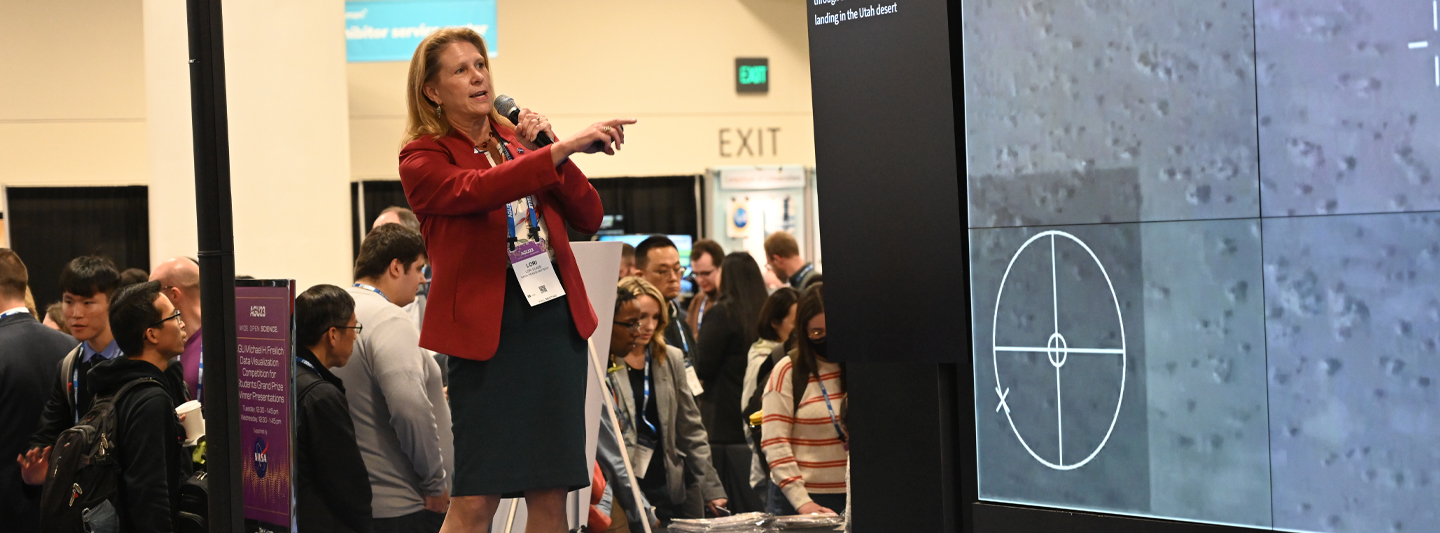
Peg Luce [NASA HQ—Deputy Director of the Heliophysics Division], Nicki Rayl [NASA HQ—Associate Director for Flight Programs, Heliophysics Division], and Gina DiBraccio [NASA’s Goddard Space Flight Center (GSFC)—Project Scientist for the Heliophysics Division] officially introduced Joseph Westlake, the newly appointed Director of NASA’s Heliophysics Division – shown in Photo 7 – as part of a presentation entitled “The Heliophysics Big Year.”
Other Hyperwall Stories presented throughout the week focused on topics such as NASA’s Earth Information Center, a first look at NASA’s Surface Water and Ocean Topography (SWOT) satellite, the success of NASA’s OSIRIS–REx sample return mission, NASA’s Nancy Grace Roman Space Telescope, and an overview of space experiments conducted by SMD’s Biological and Physical Sciences Division.
Other Highlights from the NASA Science Exhibit
Every December, AGU bookends the Science Support Office’s annual conference schedule – serving as a culmination of the year past and providing a blueprint for the year ahead. At AGU23, NASA Science unveiled its strategic messaging and artwork for the 2024 calendar year with the theme, “Through the Eyes of NASA.” The “Through the Eyes of NASA Photowall” at the NASA exhibit was intended to help promote the 2024 theme for conference attendees – see Photo 8. It featured a three-dimensional display based on the artwork of Jenny Mottar [NASA HQ—SMD Art Director].
“This year’s artwork was inspired by the Heliophysics Big Year, which began with the Annular Eclipse this past October and concludes with the upcoming total solar eclipse on April 8, 2024,” said Mottar. “I wanted to capture what it feels like to experience the beauty of nature – that perfect moment where you wish you could freeze time.”
As the visual keystone of NASA’s exhibit presence, the 10’ x 20’ photowall gave AGU attendees a chance to interact with the 2024 theme and immerse themselves in the world of NASA Science. Exhibit staff and AGU attendees alike delighted at the opportunity to pose in front of the wall with friends and colleagues – see Photo 9.
The 2024 NASA Science planning guide, (a 14-month calendar featuring an image from one of SMD’s five divisions for each month) also features Mottar’s artwork and is available for digital download in the NASA Science Multimedia Gallery. The Fall AGU is typically one of the first events at which the new year’s planning guide is available, so it is an extremely popular item. NASA Science worked with AGU to coordinate distribution of 6500 Spanish and English-language planning guides at the 2023 Fall AGU meeting. AGU staff assisted with distribution of the planning guides, which were dispensed daily at the entrance to the Moscone West exhibit hall – see Photos 10–11 – along with 22,000 pairs of NASA Science eclipse glasses to promote safe viewing of the April 8, 2024, total solar eclipse.
The planning guides and glasses were placed at a prominent location at the front of the exhibit hall to ensure attendees had access to the robust lineup of activities and products available at the NASA Science exhibit. A group of 115 subject matter experts from all five SMD divisions engaged AGU attendees with a collection of NASA products, handouts, interactive activities, three-dimensional models, and demonstrations – see Photo 12.

The exhibit also featured 44 tech demos – see Photo 13 – throughout the week, covering a wide range of topics. Attendees gathered in small groups at the top of each hour near two demo kiosks for hands-on introductions to everything from the capabilities of the OpenSpace data visualization software to the scientific applications of augmented reality. See the schedule for more details on the demos.
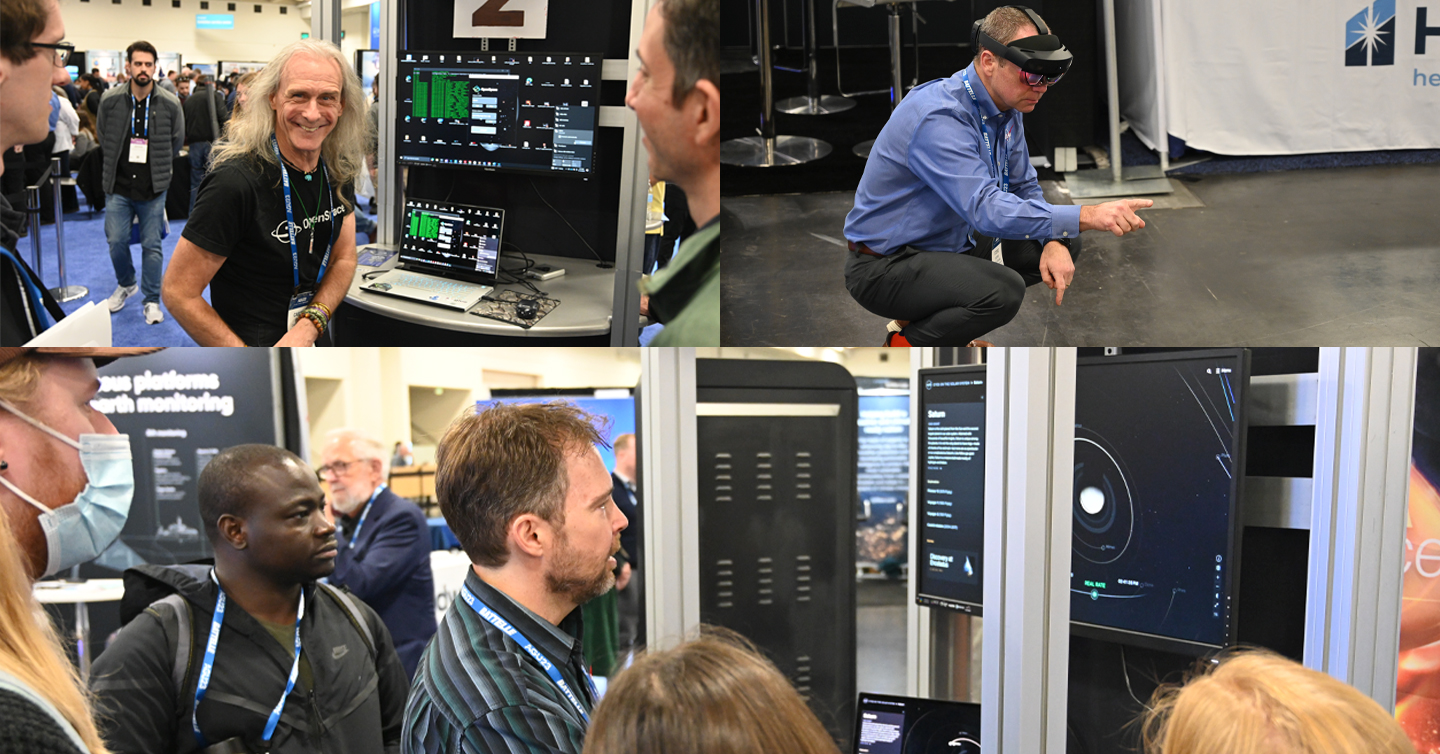
A steady stream of spirited attendees visited the NASA booth during exhibiting hours (10:00 AM to 5:00 PM daily) but it was the six scheduled signings of the Science Explorer Poster Series that garnered the most attention. Each art design reflects a distinct thematic focus of prominent NASA Science missions and research goals. AGU attendees organized themselves along the perimeter of the NASA Science exhibit, waiting for their turn to meet, take photos with, and collect artwork signed by Mottar – see Photo 14. In total, there were 6000 posters signed and distributed to attendees over the course of the week.
Conclusion
By establishing a multi-decade exhibit presence at what is arguably the gold standard in scientific conferences, NASA Science research, products, and Hyperwall stories have engaged hundreds of thousands of AGU attendees and played a fundamental role in the organization’s effort to inspire, accelerate, and punctuate the importance of geophysical sciences and its related fields.
Building on the success of AGU 2023, the NASA Science Support Office is committed to enhancing NASA’s ability to engage, inspire, and empower a diverse audience of scientists, students, and members of the general public in 2024 and beyond. NASA Science will exhibit at more than 30 domestic and international conferences in 2024, concluding with AGU24, which will take place December 9–13, 2024, in Washington, DC.
Nathan Marder
NASA’s Goddard Space Flight Center/Global Science & Technology Inc.
nathan.marder@nasa.gov




























